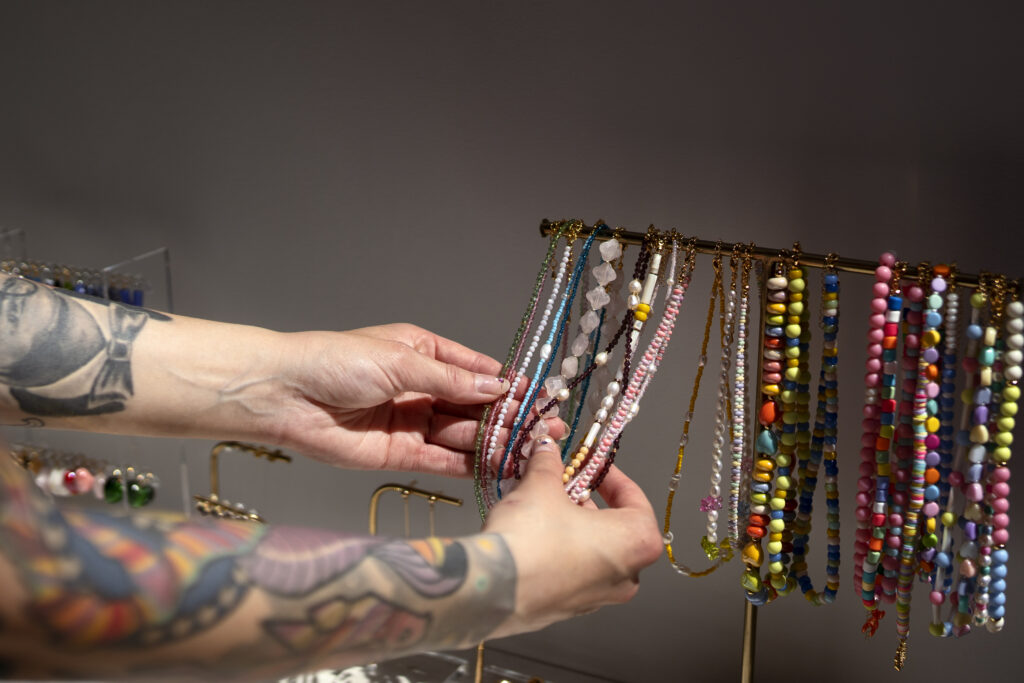
Glass Bead Making: Small Marvels with Big Impact
Glass bead making, a delicate art form, holds a rich historical significance while continuing to captivate enthusiasts with its intricate designs and transformative potential. Whether you’re an artist or simply intrigued by this craft, understanding the process and impact of glass bead making can deepen your appreciation for these small yet impactful creations.
Table of Contents
Introduction to Glass Bead Making
Glass bead-making involves the intricate art of melting glass, shaping it, and transforming it into beautiful beads. This craft has a fascinating historical background, dating back centuries and holding cultural significance across various civilizations.
Tools and Materials Required
To embark on this creative journey, you’ll need an assortment of materials—different types of glass, various tools, and safety gear to ensure a smooth and safe process.
Step-by-Step Guide
Creating glass beads involves meticulous steps, from setting up the workspace to melting and shaping the glass into desired forms. Various techniques, such as lampworking and kiln-firing, contribute to the bead’s final look.
Creative Designs and Styles
The world of glass bead-making offers a vast array of designs, from traditional patterns to contemporary styles, allowing artisans to explore their creativity.
Safety Measures and Precautions
Safety remains paramount in this craft. Proper safety gear and precautions help prevent accidents and ensure a secure working environment.
Community and Culture
Glass bead making isn’t just a craft; it’s deeply embedded in cultural traditions worldwide, contributing to the identity and heritage of communities.
Market Trends and Demand
In recent years, there has been a surge in demand for handmade goods, including glass beads, reflecting the appreciation for artisanal craftsmanship.
Environmental Impact
The shift toward sustainable practices and recycling in glass bead-making showcases the industry’s commitment to environmental responsibility.
Health Benefits
Beyond its artistic value, engaging in glass bead making has therapeutic benefits, fostering mental wellness and enhancing creativity.
Artisan Stories and Experiences
Exploring the success stories and personal experiences of artisans sheds light on the dedication and passion behind this craft.
DIY Tips for Beginners
For those starting, understanding the basics and avoiding common mistakes is crucial. Learning from experienced artisans can accelerate one’s journey.
Future Prospects and Innovations
Technological advancements and innovative techniques continue to shape the future of glass bead-making, presenting exciting possibilities.
Cultural Significance

These small marvels hold significant cultural meanings, often used in rituals, ceremonies, and as symbols of heritage.
Educational and Learning Opportunities
Workshops and courses offer avenues to learn and master this craft, allowing individuals to explore their creative potential.
Conclusion
Glass bead-making stands as a testament to human creativity and cultural diversity. Its allure transcends time, offering both artistic satisfaction and a glimpse into vibrant traditions.
FAQs:
What makes glass beads making therapeutic?
Glass bead-making offers therapeutic benefits due to its meditative and immersive nature. The process demands focused attention, allowing individuals to enter a state of flow where they lose track of time and stress fades away. Engaging in this creative process promotes mindfulness, reduces anxiety and promotes relaxation. Additionally, the tactile experience of working with the glass, feeling its transformation under heat, and witnessing the creation of something beautiful contributes to a sense of accomplishment and fulfillment, boosting one’s mood and overall well-being.
Are there any famous cultural uses of glass beads?
Glass beads hold significant cultural value across the globe. They have been integral parts of various traditions and ceremonies for centuries. For instance, in African cultures, beads are symbols of wealth, status, and cultural identity. They’re used in adornments, clothing, and rituals, signifying heritage and social standing. In Native American cultures, beads are woven into intricate patterns, telling stories and carrying spiritual meanings. Moreover, in Asian cultures, beads are often incorporated into jewelry and religious artifacts, symbolizing luck, protection, and spirituality.
How can beginners start learning glass bead making?
For beginners, starting with basic tools and materials is essential. Enrolling in workshops or courses offered by experienced artisans or local craft centers provides hands-on learning opportunities. Learning foundational techniques like melting glass, shaping beads, and mastering safety protocols is crucial. Online resources, books, and tutorials offer valuable guidance. Additionally, joining online communities or forums dedicated to glass bead-making enables beginners to seek advice, share experiences, and learn from others’ expertise.
What safety measures are essential for this craft?
Safety is paramount in glass bead-making due to the involvement of high temperatures and potentially hazardous materials. Essential safety measures include wearing protective gear such as safety glasses, heat-resistant gloves, and an apron to shield against molten glass splatters. Adequate ventilation in the workspace is crucial to prevent exposure to fumes. Maintaining a clean and organized workspace minimizes accidents. It’s also vital to have a fire extinguisher nearby and to be familiar with emergency procedures in case of accidents.
What environmental initiatives are prevalent in the glass bead-making industry?
The glass bead-making industry is increasingly focusing on sustainability and environmental responsibility. Many artisans and studios are adopting eco-friendly practices, such as using recycled glass to create beads, reducing waste, and minimizing the environmental impact of production processes. Additionally, some artisans are exploring energy-efficient kilns and tools to lower their carbon footprint. Collaborations with recycling programs and initiatives to educate consumers about sustainable practices further contribute to the industry’s environmental initiatives.
